Bringing a new puppy into your home is one of life’s happiest moments. Everything is new to them, and they see a world full of exciting things to explore.
With their soft fur and clumsy paws, they aren’t just a pet—they’re a little adventurer living in your house.
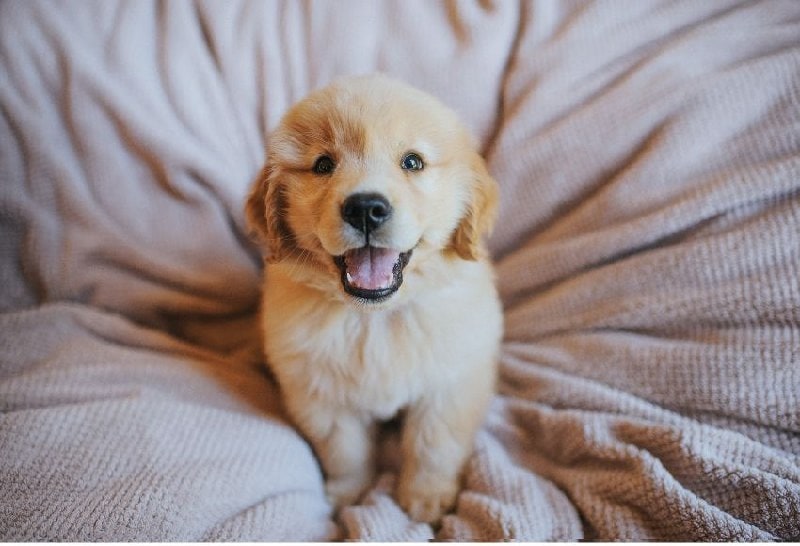
A puppy’s main tool for learning is their mouth. They chew on furniture, sniff at cords, and taste-test just about anything they can find. This isn’t them being “bad”; it’s simply how they figure out their new surroundings.
While this curiosity helps them learn, it can also get them into trouble. For this reason, one of your first big jobs is learning all about ‘How to Puppy Proof Your House’.
This isn’t just about protecting your belongings. It’s about creating a safe space where your puppy can play and grow without you having to worry. Think of it as the most important welcome gift you can give your new family member.
To make it easy, we’ll follow a proven three-step strategy: 1) Management 2) Training and 3) Prevention. This isn’t just a random list of tips. It’s a complete approach that helps you protect your home while teaching your puppy to understand safety.
Let’s get started on creating that perfect, secure home for your pup.
Start Small: The Foundation of Puppy Proofing
When you first consider ‘How to Puppy Proof Your House’, it’s tempting to give your new puppy the full run of the house on day one. However, most experts agree that this can be risky for both of you.
The most important strategy, and the true foundation of puppy proofing, is to make your puppy’s world smaller at first. This means instead of letting them roam freely, you limit them to one specific, 100% safe area.
This “puppy-proofed zone” is the key to a successful start. Here’s why this method works so well:
- Easier Supervision. It’s much simpler to keep a close eye on your puppy when they are in a smaller, contained space. This allows you to watch their activity and prevent them from getting into danger.
- Simpler House-Training. A limited area makes potty training much more manageable. The puppy learns the right place to go without having the chance to make mistakes all over the house.
- Reduces Puppy Anxiety. A huge, new environment can make a small puppy feel lost and overwhelmed. A cozy, secure zone helps them feel safe and comfortable as they adjust.
- Stops Problem Chewing. When you can’t watch your puppy, a safe zone protects your things. It keeps them from chewing on furniture, shoes, or other items.
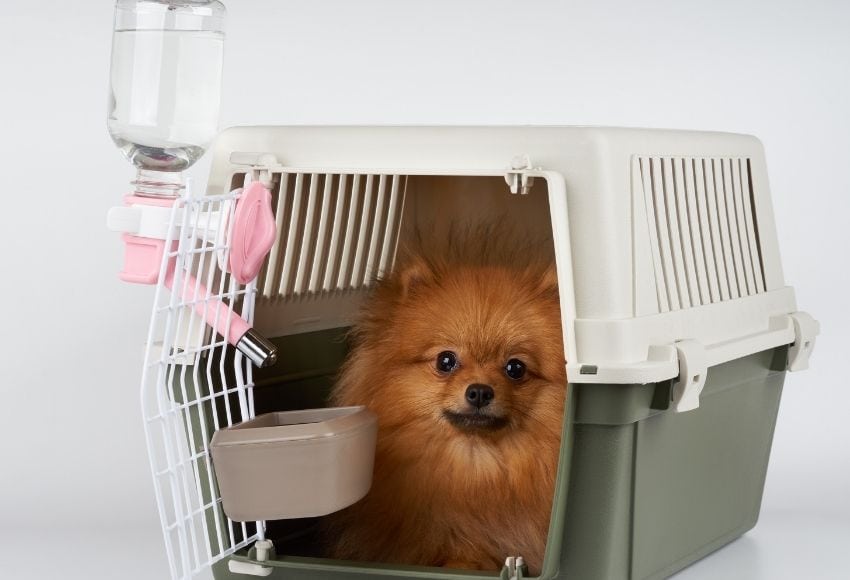
how to puppy proof your house: the room-by-room checklist
To turn your home into a safe fortress, you need to look at each room one by one. This checklist helps you find dangers in each room and provides simple solutions for ‘How to Puppy Proof Your House’.
The Kitchen: Center of Smells and Dangers
The kitchen is one of the most tempting—and hazardous—places for a puppy. All the interesting smells spark their curiosity.
- Trash Cans: The smell of leftover food attracts puppies. But bad food like onions or chocolate can make them very sick, as it’s poison to dogs. Solution: Use a trash can with a locking lid, or place the can inside a cabinet with a childproof latch.
- Human Food: Keep human food off your counters. Some foods, like grapes and raisins, are very bad for dogs. Solution: Store all food in high cabinets or a secure pantry.
- Cleaning Supplies: All chemical cleaners, even those labeled “natural,” can be deadly. Solution: Keep them in a locked cabinet, period.
- Other Pets: If you have a cat, their food and litter box can be a problem. Cat feces can carry parasites, and eating litter can cause a fatal blockage. Solution: Place the cat’s food and litter box somewhere high up or in a room the puppy can’t access.
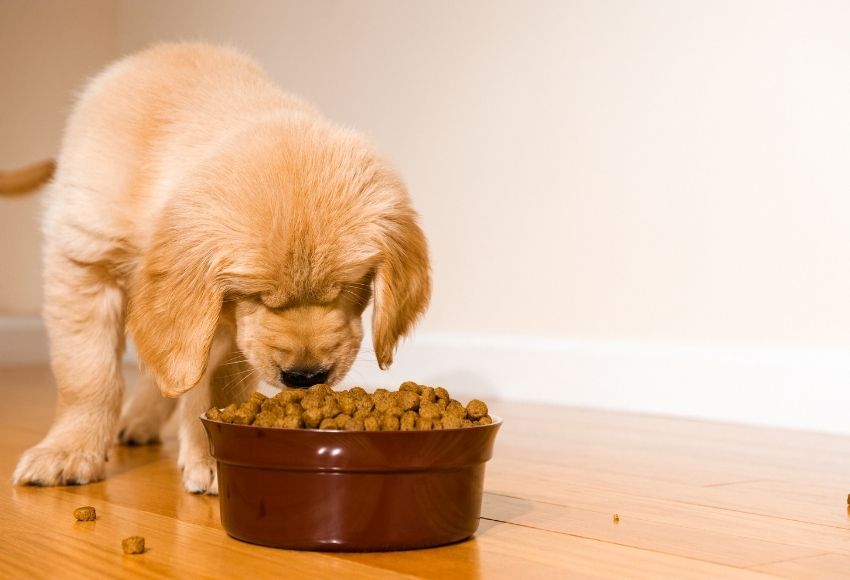
The Living Room: A Cozy Space with Hidden Hazards
Your comfy living room has many hidden dangers for a curious pup. Learning how to puppy proof your house is especially important in this shared space.
- Electrical Cords: Puppies love to chew on electrical cords, which can burn their mouth or cause a bad shock. This is a key part of puppy proofing electrical cords. Solution: You should cover all wires with cord covers, hide them behind furniture, or clip them to a wall.
- Furniture & Decor: Heavy items like bookshelves or TVs can be pulled over. Puppies may also chew on furniture legs. Solution: Secure heavy furniture to the wall with anti-tipping straps. Use a bitter-tasting deterrent spray on furniture legs to discourage chewing.
- Windows & Curtains: The cords on window blinds are a major strangulation hazard. Solution: Tie up all blind cords high and out of reach. Tuck away long curtains they might pull on.
- Small Objects: Small things like coins, toys, or remotes are a danger. If a puppy swallows one, it can cause choking or a bad blockage inside. Solution: Do a daily sweep of tables and floors and put all small items away.
- Houseplants: Many common houseplants are poisonous if eaten. Solution: Remove all plants toxic to puppies or place them on very high shelves.
- Fireplace: An open fire or hot embers can cause severe burns. Solution: Use a sturdy fireplace screen at all times.
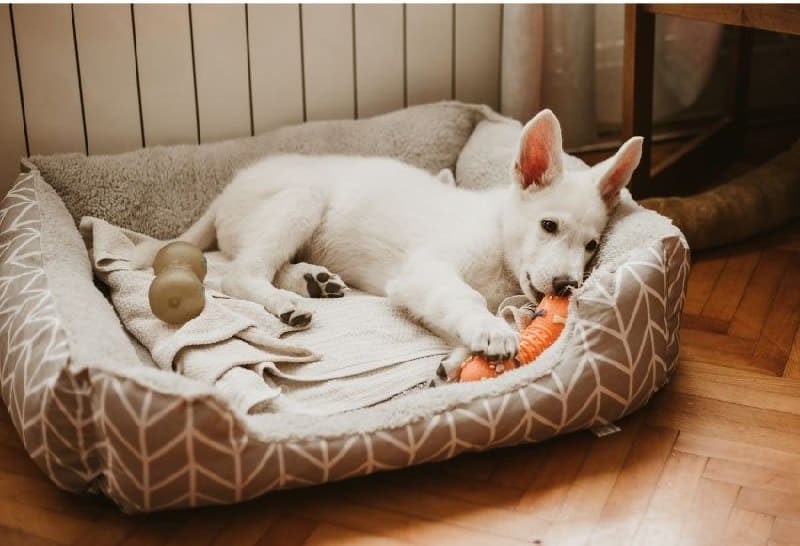
The Bedroom: Your Personal Sanctuary
Even a calm bedroom has risks that need to be managed.
- Medications & Lotions: All pills, lotions, and cosmetics must be kept away. A puppy can easily chew through a “childproof” cap. Solution: Store these items in a secure drawer or a high, closed cabinet, never on a nightstand.
- Clothing & Shoes: Shoelaces, socks, and buttons can be swallowed and cause serious harm. Solution: Keep laundry in a closed hamper and put shoes away in a closet.
- Charging Cords: Just like in the living room, phone chargers are tempting chew toys. Solution: Unplug and put away chargers when not in use.
- Hiding Spots: A puppy can get stuck or find forgotten hazards under the bed. Solution: Block access to the space under your bed.
The Bathroom: A Surprisingly Risky Room
Don’t overlook the bathroom; it’s full of potential dangers.
- The Toilet: A puppy can drown in an open toilet. The water may also have chemical cleaners in it. Solution: Always keep the toilet lid down.
- Trash Cans: Dental floss, razors, and other items in the trash are dangerous if eaten. Solution: Use a trash can with a lid or keep it in a cabinet.
- All Meds & Cleaners: Just like in other rooms, all medicines and cleaners must be secured. Solution: Store everything in locked or high cabinets.
The Garage & Storage Areas: A Minefield of Chemicals
Garages are often full of poisons and sharp objects. It’s best to keep this area off-limits entirely.
- Toxic Chemicals: Antifreeze is the biggest danger. It has a sweet taste but is extremely lethal. Solution: Lock away all antifreeze, pesticides, fertilizer, paint, and fuel. Check for any spills on the floor.
- Tools & Hardware: Sharp tools can hurt your puppy badly. Small items like screws or nails are also a big danger. Solution: Store all tools and hardware up high on shelves or in locked toolboxes.
how to puppy proof your yard: Securing the perimeter
The inside of your home isn’t the only area that needs to be safe for your puppy. Learning ‘How to Puppy Proof Your House’ also extends to your yard or garden, which can be a wonderful place for your pup to play, but it comes with its own set of risks.
- Fencing is a Must. Your yard must be secured with a sturdy fence. Check the entire fence line regularly for any holes or gaps. Puppies can squeeze through very small spaces! The fence also needs to be tall enough to prevent your puppy from jumping over it.
- Secure Swimming Pools. A swimming pool is a major hazard, as a puppy can easily fall in and drown. It is essential to have a separate, secure fence around the pool area itself.
- Identify Toxic Plants. Many common yard plants and flowers are poisonous to dogs. You must identify and remove them. (See the detailed list below).
- Lawn & Garden Care. After treating your lawn with fertilizer or pesticides, keep your puppy off the grass for the recommended time. Always store these chemicals in a safe, locked location.
- Other Yard Hazards. Block access to HVAC units and outdoor electrical boxes. Put away lawn equipment when you’re done using it. Keeping the grass cut short also makes it easier to spot pests like ticks.
- Constant Supervision. Never leave a young puppy alone in the yard. Use this time to play with them and train them. It’s also crucial for protecting them from dangers like predators or heatstroke.
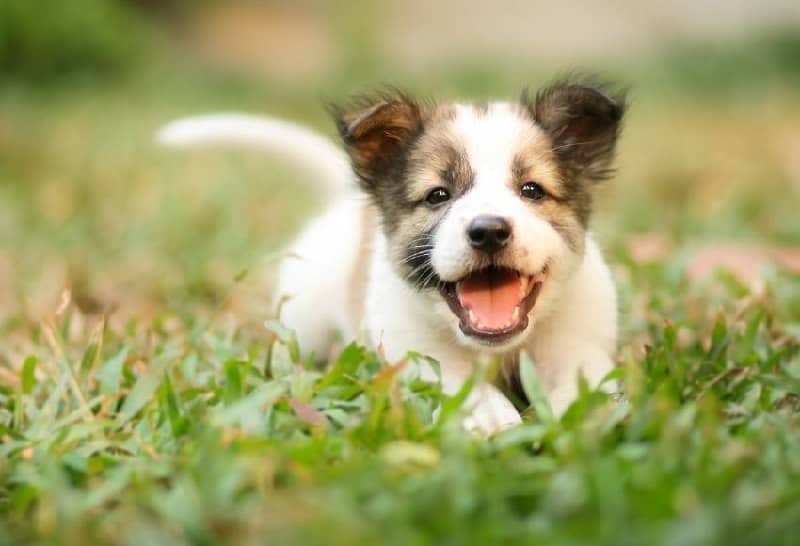
Deep Dive: Neutralizing Critical Hazards
In this section, we’ll take a closer look at one of the biggest risks to your puppy: toxic substances. Providing this level of detail is crucial for understanding how to puppy proof your house, making this a truly comprehensive guide.
Canine Toxicology 101: Plants Your Puppy Should Never Eat
A puppy’s powerful sense of smell and endless curiosity mean they will try to put almost anything in their mouth. As an owner, knowing which common plants and foods are toxic can be a lifesaver.
The most reliable source for this information is the American Society for the Prevention of Cruelty to Animals (ASPCA). Below is a summary table to help you make your home and yard safer.
Common Toxic Plants:
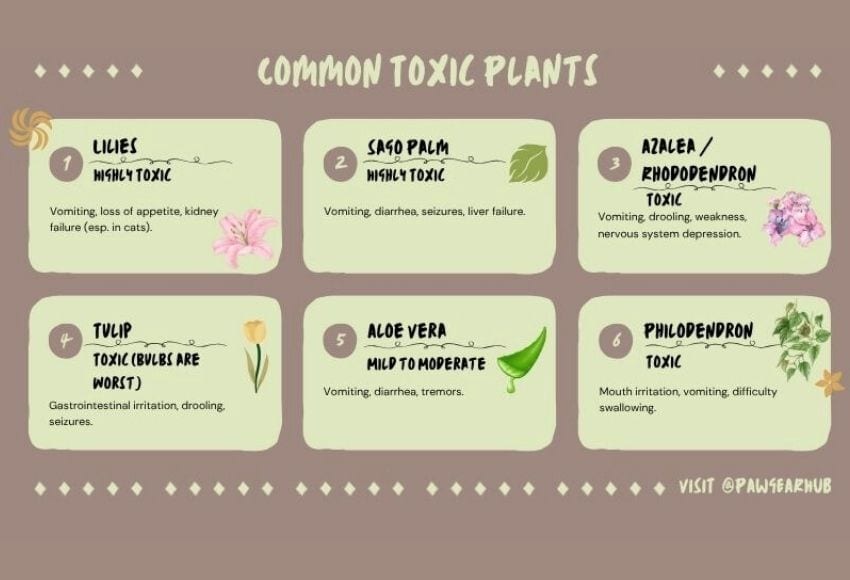
Common Safe Plants:
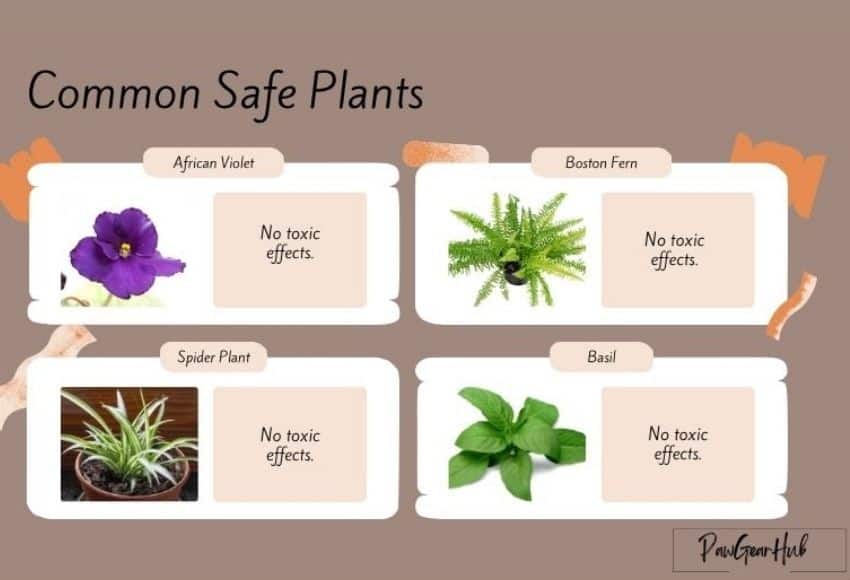
Dangerous Human Foods: A Kitchen No-Go List
Many common human foods can be dangerous or even fatal for puppies. Keep your pup safe by ensuring they never have access to the items on this list.
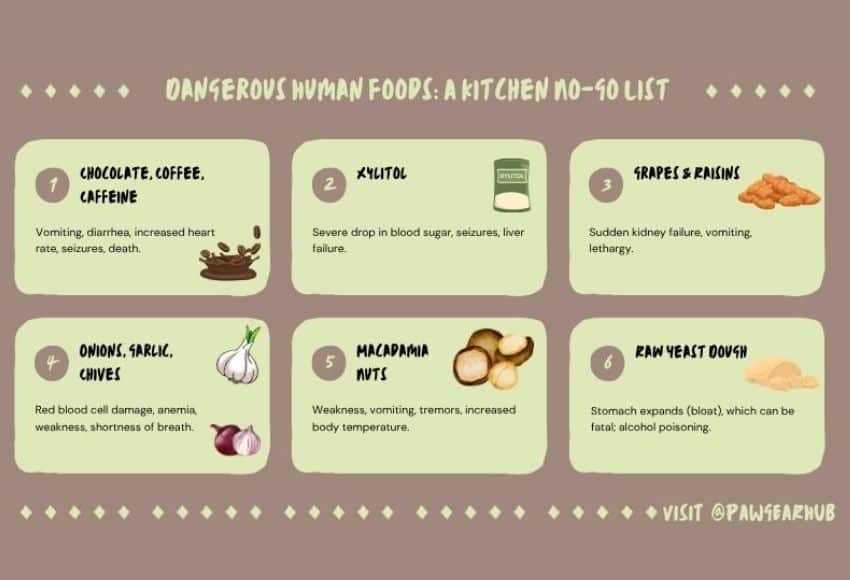
Taming the Tangle: A Guide to Electrical Cord Safety
A major part of knowing How to Puppy Proof Your House involves dealing with electrical cords. Puppies may chew on these out of boredom, due to teething discomfort, or just for play.
Here is a hierarchy of solutions, from simple to heavy-duty:
- Management: The easiest method is to hide cords behind or under furniture, or run them under carpets where your puppy can’t see or reach them.
- Deterrents: Applying a bitter-tasting spray to cords can discourage chewing. However, this may not work for all dogs.
- Basic Covers: You can find simple plastic covers for your wires. These are often called split loom tubing or spiral wraps. They are cheap and easy to use. But, a puppy who chews a lot might still break them.
- Heavy-Duty Covers: If your puppy chews a lot, you may need stronger covers. A PVC pipe is very strong, but it does not bend well. You can also find metal-covered sleeves. These are great for stopping sharp puppy teeth.
- Outlet Protection: Don’t forget to put safety covers on all unused electrical outlets. A curious puppy might lick or bite them, which can be incredibly dangerous.
Beyond Puppy Proofing: Proactive Training for a Safer Pup
Managing your puppy’s environment is the essential first step, but it is not a complete solution.
The final and most important layer of safety comes from a well-trained dog who understands boundaries and knows how to behave. This section elevates your strategy from a simple safety guide to a holistic puppy-raising manual.
The “Leave It” Command: Your Most Important Safety Cue
Teaching your puppy to “Leave It” can literally save their life. This command teaches them to ignore dangerous dropped items, like medication or toxic food. Here’s how to teach a puppy “leave it” using positive reinforcement.
- Start with a Closed Fist. Place a low-value treat in your hand and close your fist. Say “Leave It” clearly and hold your fist out to your puppy. They will likely sniff, lick, or paw at your hand. Ignore this. The moment they pull their head away, even for a second, praise them and give them a high-value treat from your other hand.
- Move to an Open Palm. Once your pup reliably moves away from your closed fist, try it with the treat on your open palm. If they try to take it, quickly close your fist. If they wait, reward them with a better treat from your other hand.
- Practice on the Floor. Place a low-value treat on the floor, but cover it with your hand. When they stop showing interest, give them the high-value treat. Slowly start lifting your hand away from the floor treat, but be ready to cover it again if they move toward it.
- Use it in Real Life. Practice this command with new things and in new places. This helps your puppy learn that “Leave It” means to leave any object alone.
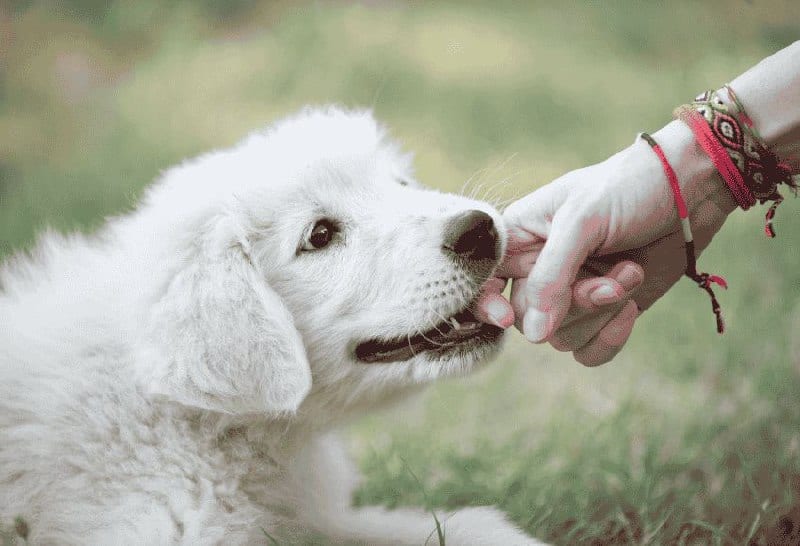
Managing Nipping and Biting: Teaching a Soft Mouth
Nipping is a normal part of puppy play and learning. However, you must teach them that human skin is not for biting.
- Bite Inhibition: Puppies learn to control their bite pressure from their littermates. If one puppy bites too hard, the other yelps and stops playing. You can do the same. When your puppy nips you, let out a sharp, high-pitched “Ouch!” and briefly stop the interaction.
- Withdraw Attention: If yelping seems to excite your puppy more, try a different method. Calmly stand up and walk away. Go into another room for a few moments. This teaches them that biting makes their favorite playmate (you) go away.
- Redirection: Always have a proper chew toy on hand. Whenever they try to mouth your hands or feet, put the toy in their mouth instead. When they start chewing the toy, praise them enthusiastically.
- Reward Calm Behavior: When your puppy is playing nicely or resting calmly without biting, give them gentle praise or a small treat. This reinforces the idea that being calm is a rewarding behavior.
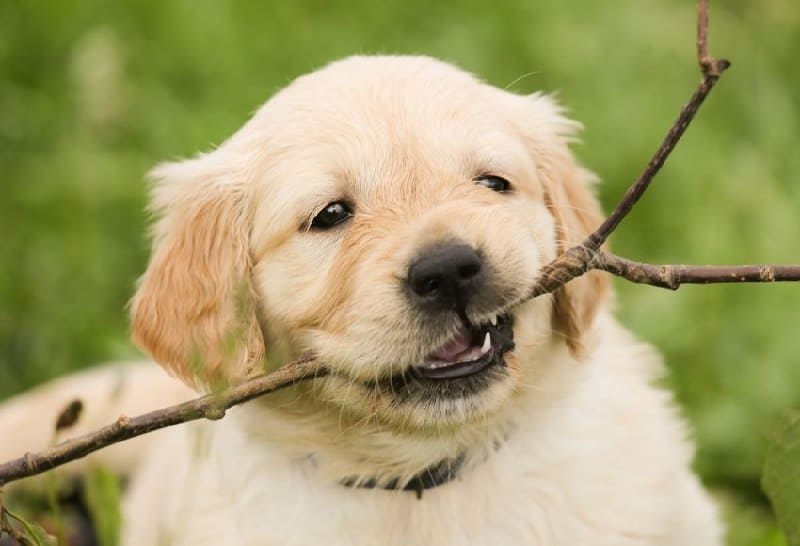
The Foundation of Safety: Routine, Crate Training, and Socialization
A stable and predictable environment is essential for raising a safe, happy, and well-adjusted dog. Knowing ‘How to Puppy Proof Your House’ includes establishing good routines.
- Routine: A routine helps your puppy feel safe. Try to feed, walk, and play with them at the same time each day. This stops them from feeling worried and can prevent bad habits.
- Crate Training: Never use a crate as punishment. Instead, introduce it as a safe, personal den—a “cave” where they can feel secure. This prevents destructive behavior when you can’t supervise them and is a huge help with Crate training.
- Socialization: Let your puppy meet lots of new things before they are 16 weeks old. This should be done in a happy and safe way. Let them meet new people and friendly, vaccinated animals. Show them new places and let them hear new sounds. Proper socialization prevents fear-based aggression and helps create a confident, well-rounded adult dog. Always follow your vet’s advice on when it is safe to interact with other dogs based on their vaccination schedule.
The Puppy-Proofer’s Toolkit: A Buyer’s Guide to Essential Gear
To make your puppy-proofing job easier, having the right tools can make all the difference. This guide on ‘How to Puppy Proof Your House’ wouldn’t be complete without recommending the right equipment.
Safety Gates
- Types of Gates: There are four main types. Pressure-mounted gates are easy to install and great for doorways. Hardware-mounted gates are drilled into the wall, making them much more secure and essential for the top and bottom of stairs. Retractable gates save space, while Freestanding gates are easy to move around.
- Features to Look For: Consider features like auto-close, a stay-open option, or a built-in pet door. Pay attention to the gate’s height (for jumpers) and the space between the bars (for small puppies). Brands like Regalo, Cumbor, and Cardinal Gates are known for being reliable.
Secure Trash Cans
- Look for trash cans with lids that lock or require a step-pedal to open. These are much harder for a curious puppy to get into.
Durable Chew Toys
- It is essential to give your puppy a variety of safe, durable chew toys. This satisfies their natural urge to chew and keeps them from chewing on your furniture or other inappropriate items. Brands like KONG and Nylabone are popular for a reason—they work.
Expert Advice: What the Vets and Behaviorists Say
When it comes to your puppy’s safety, the advice from veterinarians and animal experts is the most reliable. Their knowledge and experience can help you make the right choices.
The Importance of Socialization
A top animal expert, Dr. Ian Dunbar, gives this advice. He says a puppy should meet 100 new people by the time they are 16 weeks old. This helps them grow up happy and friendly.
Another group of vets (the AVSAB) gives a serious warning. They say that behavior problems are the number one cause of death for young dogs, even more than sickness. This means meeting new people and pets early is a must-do, not just a nice extra.
Prevention, Not Punishment
Vets from VCA Hospitals say that punishing a puppy does not work well. It can even hurt the friendship you have with your pup. Instead of punishing for bad behavior, try to prevent problems before they start. Watch your puppy closely and guide them to do the right thing.
When to Get Help
- If your puppy eats something that might be poison, call your vet right away. You can also call an Animal Poison Control Center.
- If your puppy is still biting a lot after they are 6 months old, it is time to ask for help. Look for a good dog trainer or a pet behavior expert.
https://pawgearhub.com/dog-wound-care/
https://pawgearhub.com/is-ibuprofen-safe-for-dogs/
https://pawgearhub.com/what-foods-are-toxic-to-dogs/
Frequently Asked Questions
Many common foods are toxic to puppies, including chocolate, coffee, grapes, raisins, onions, garlic, macadamia nuts, and any product containing the sweetener Xylitol.
The best methods are to hide cords behind furniture, cover them with durable cord protectors, or apply a bitter-tasting deterrent spray to make them unappealing.
If you suspect your puppy has ingested something toxic, call your veterinarian or an Animal Poison Control Center immediately for professional guidance.
